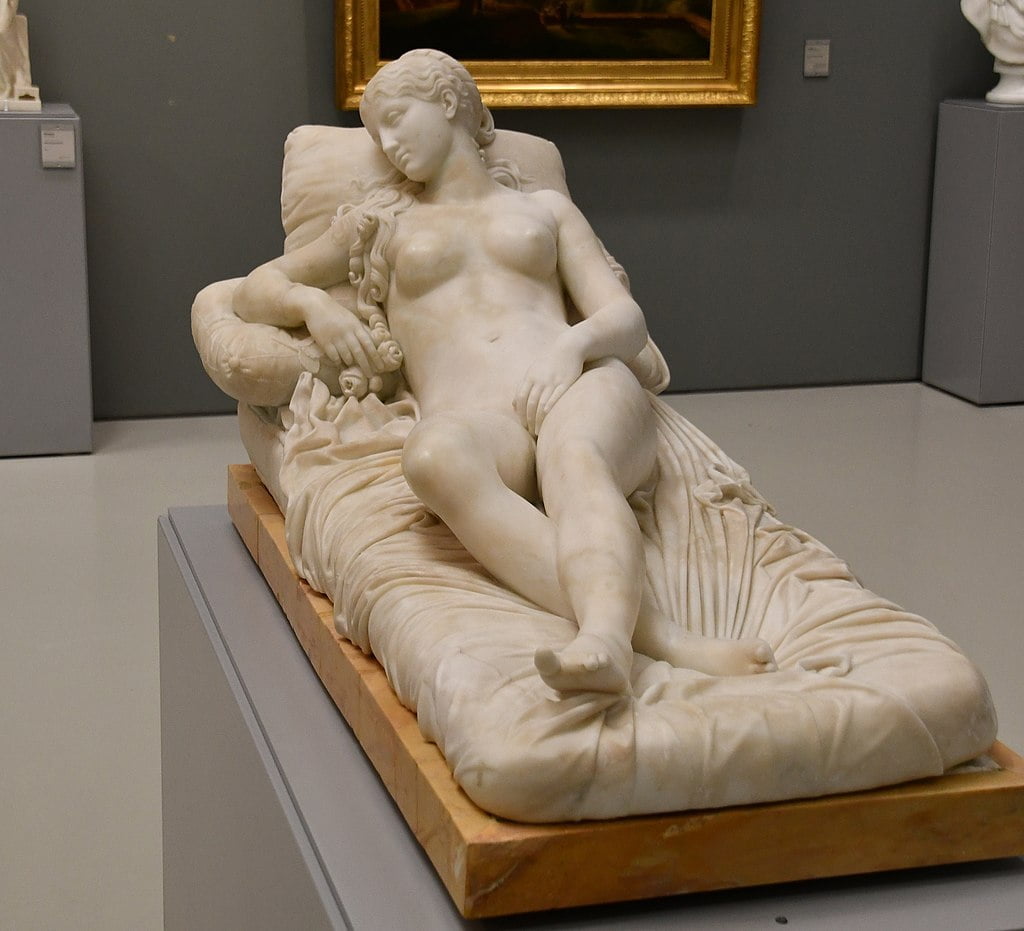One of the most famous Renaissance paintings in the world depicts a naked young lady in a Renaissance Palace.
In this post, you’ll discover the ultimate list of interesting Venus of Urbino facts, One of the ultimate masterpieces of this Italian painter!
1. It was painted in the early 1530s
The Venus of Urbino is an oil on canvas painting created by one of the most famous artists of the Renaissance, Tiziano Vecelli, better known as Titian.
It has dimensions of 119 × 165 centimeters (47 × 65 inches) and was possibly painted between 1532 and 1534, even though the exact date it was completed remains unclear.
It depicts a naked woman lying down on a couch in a reclining position. The nude young woman is often associated with the goddess Venus, the Roman goddess of love, desire, sex, and fertility.

2. It wasn’t the first time that a woman was depicted like this
One of the most remarkable Venus of Urbino facts is that it wasn’t the first time that a naked woman had been depicted like this. The painting is without question based on the so-called “Dresden Venus,” which was painted by Giorgione about 25 years earlier.
What makes this even more remarkable is that Titian most probably completed the landscape in the background of this “Sleeping Venus” after Giorgione passed away in 1510.
The main difference between the Venus of Urbino and the Sleeping Venus of Dresden is that the latter painting depicts the naked woman in an outdoor setting while the Urbino Venus is depicted on a couch in a Renaissance Palace.
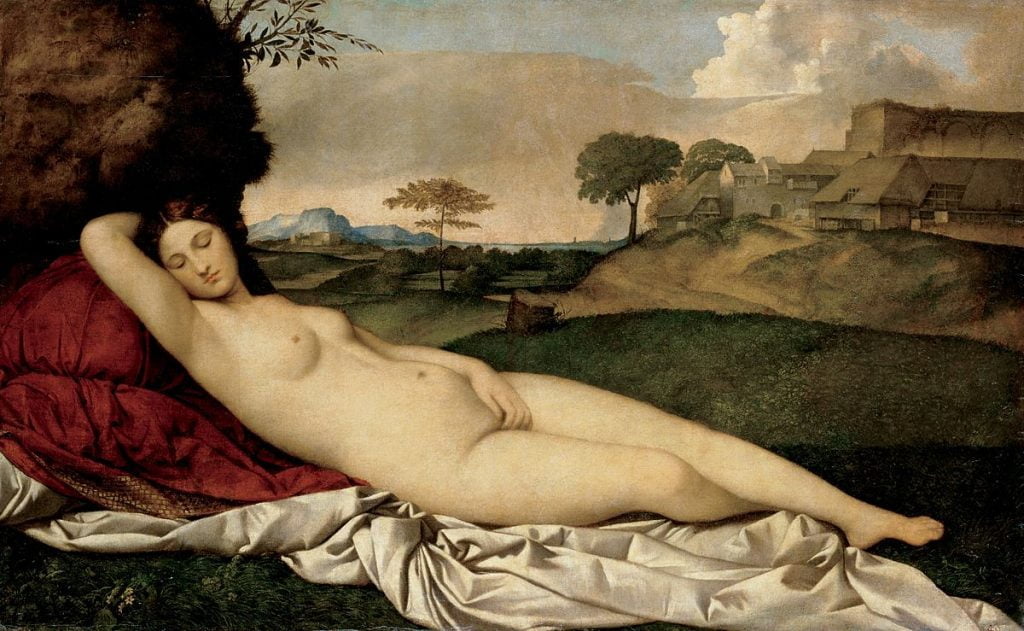
3. It probably depicts a prominent courtesan in Venice
While it remains unclear today as to who is depicted in the painting, most historians agree that it depicts a woman named Angela del Moro, also known as Angela Zaffetta.
This was a popular Venetian courtesan, a nicer word for prostitute. She sometimes accompanied Titian and the people he depicted in his paintings, as well as other important people in Venice at the time.
Around the time the painting was created, Titian had a commission to depict the son of Giuliano di Lorenzo de’ Medici and the nephew of Pope Clement VII named Ippolito de’ Medici. He was just made cardinal and Titian created a portrait of him for this occasion.
It’s known that Ippolito spent the night with Angela Zaffetta on October 20, 1532.
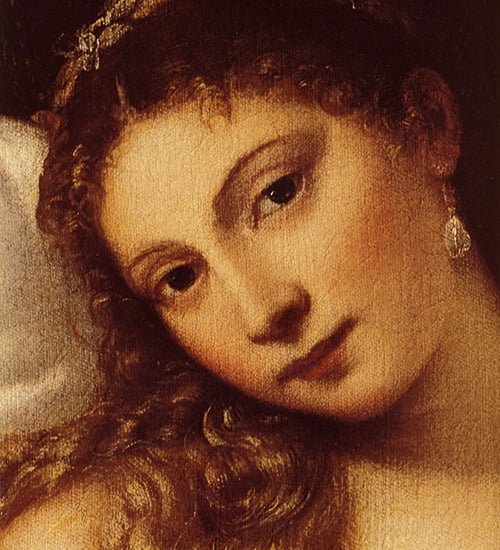
4. It’s unclear whether or not the painting was commissioned
Whether or not Ippolito asked for the portrait of Angela to be painted or not remains a mystery. The other option is that Titian simply created the portrait as a gift, mainly because he knew both individuals personally.
What we do know is that Titian wrote a letter to the cardinal on December 20, 1534, that he was working on a portrait of a woman for him.
Ippolito died from a fever on August 10, 1535, so he most probably never saw the painting. It simply remained in Titian’s workshop the following years.
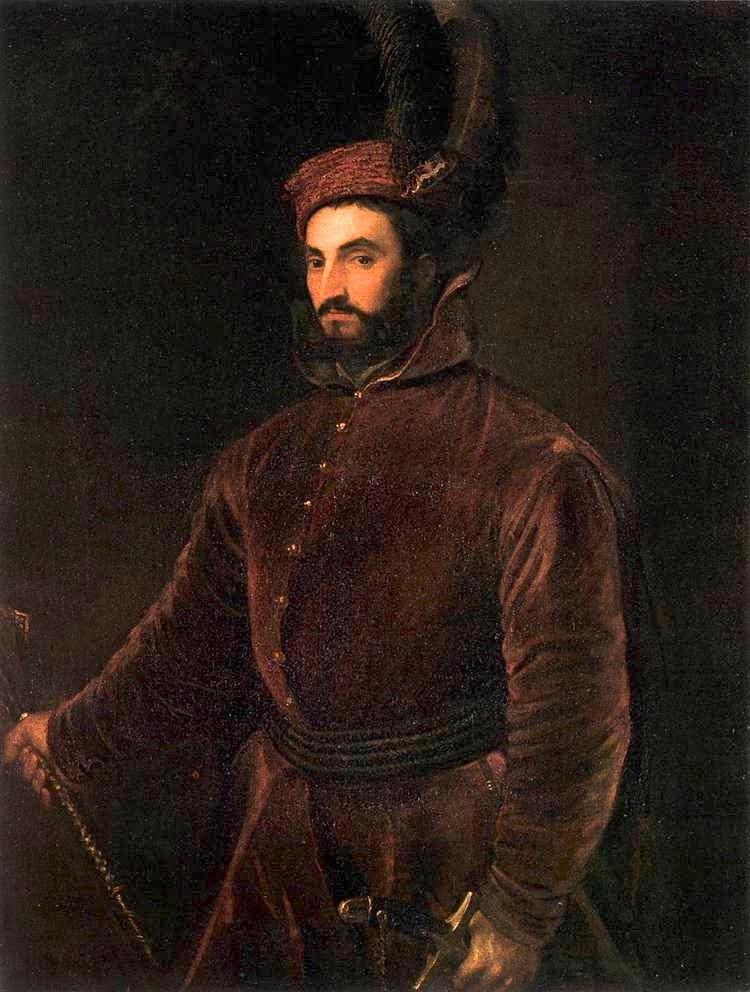
5. There’s an alternative theory as to why it was painted
Even though Titian’s letter contradicts this alternative theory, it’s possible that the painting was in fact commissioned. The painting eventually ended up being bought by Guidobaldo II della Rovere, the son of the Duke of Urbino, in 1538.
The alternative theory suggests that he had actually commissioned the painting in 1534 to commemorate his arranged marriage with the 10-year-old Giulia Varano.
It’s clear that the painting has an erotic undertone, some even suggesting that the woman engages in masturbation. This wasn’t uncommon in those days as it was believed that conception could only occur if a woman had an orgasm.
The dog on the couch is a symbol of fidelity. The maids in the background are looking into a chest of clothes that was often given to the bride by the husband after marriage.
So it remains possible that this painting was commissioned to celebrate the marriage of Guidobaldo II della Rovere, or the consummation of it.

6. It was named after the man who bought it in 1538
Regardless of whether or not the painting was commissioned, it was bought by Guidobaldo II della Rovere (1514-1574) after he came to Titian’s studio to have his portrait created in January of the year 1538.
The 24-year-old was clearly impressed with the Venus of Urbino and wanted to buy it straight away. He even wrote letters to his mother referring to the painting of “the naked woman.”
He eventually ended up buying it several months later. Since he was the son of the Duke of Urbino, the painting was given the name it still goes by today.
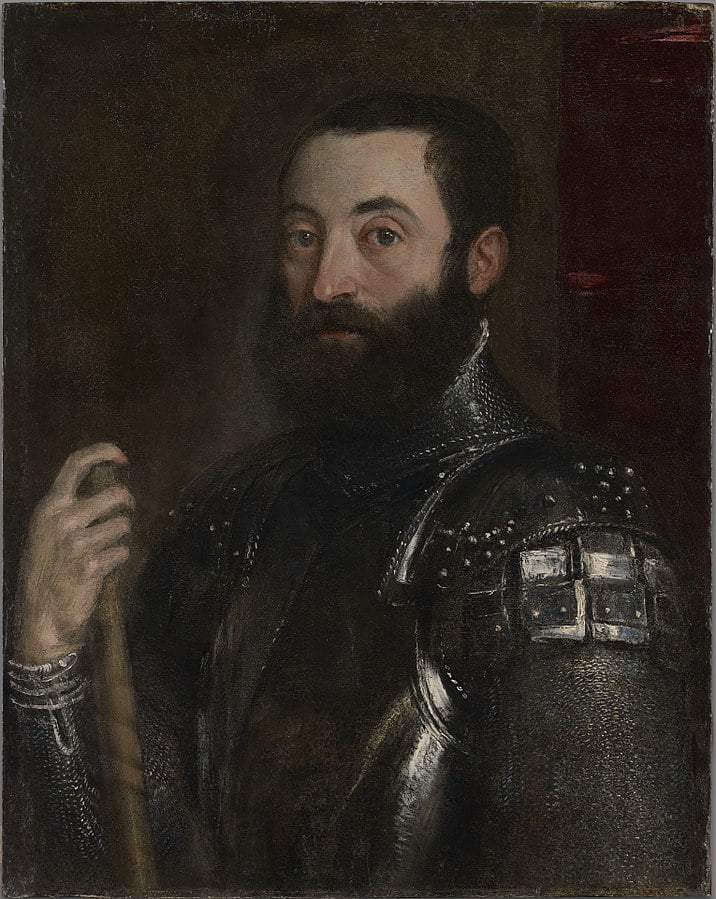
7. It hung in a palatial house in Pesaro for over a century
It’s unclear where exactly where the painting was kept after it was acquired. By the year 1624, the Duchy of Urbino was annexed by the Papal States and the court moved to Pesaro, a city on the east coast of Italy.
In 1633, the painting joined the collection of the Medici family and hung for nearly a century at the Villa Imperiale in Pesaro, a magnificent Renaissance palatial house just outside of the city.

8. It was moved to its current location in the 18th century
So where can the Venus of Urbino be admired now?
Ever since the year 1736, it has been on public display at the Uffizi Gallery in Florence, an art gallery in the capital city of the Tuscany Region in Italy. It has also been featured in various exhibitions in cities around the world, including Madrid, Brussels, Tokyo, Venice, and most interestingly, Urbino!
With well over 4 million yearly visitors, this is also one of the most popular art museums in the world!
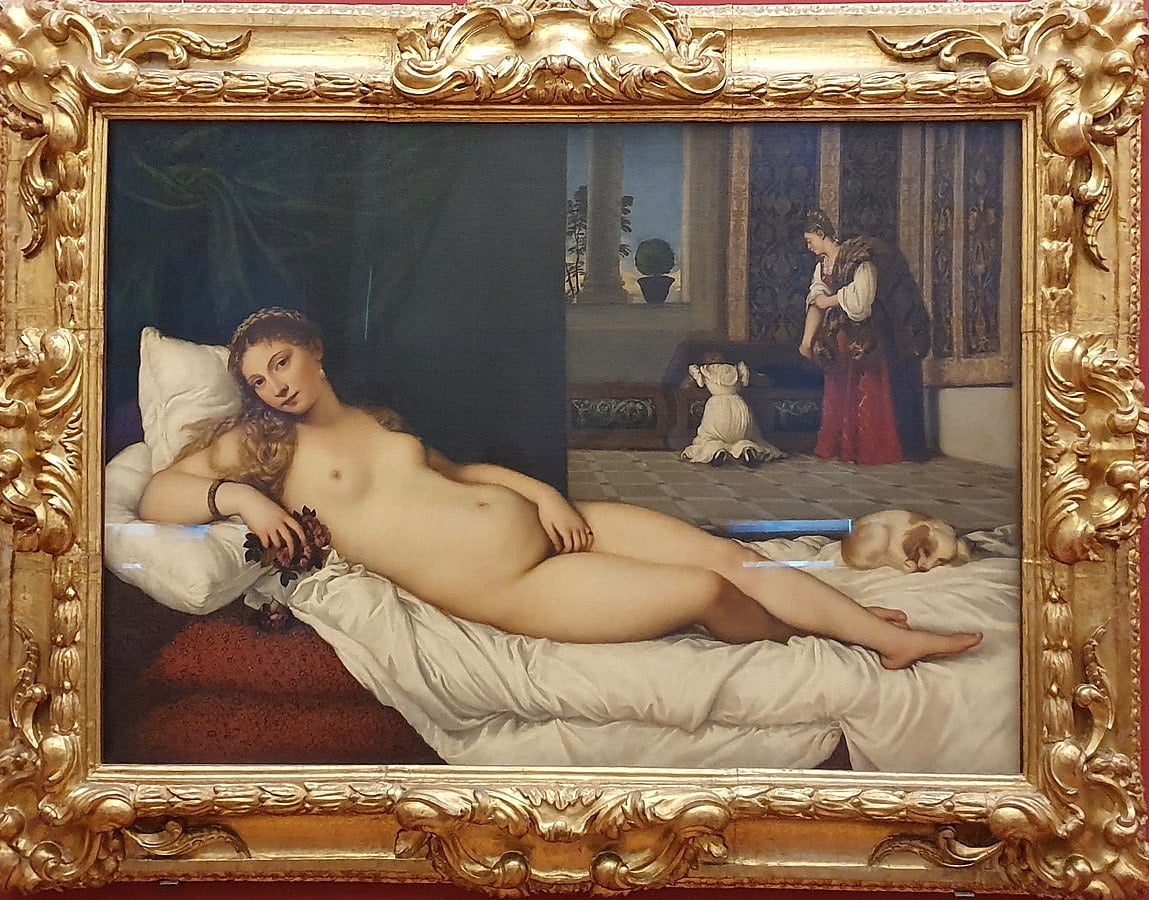
9. The painting has been very famous all throughout its history
One of the most fascinating Venus of Urbino facts is that it has been considered to be one of the most famous paintings in the world all throughout its history. This is especially emphasized in a work referred to as the “Tribuna of the Uffizi.”
This work was created between 1772 and 1778 by German Neoclassical Artist Johan Zoffany and depicts the works of art in the Medici collection which he considered to be the most important.
It’s fair to conclude that this painting was considered to be extremely important, hence its prominent location in this painting which is part of the Royal Collection of the British Royal Family at Windsor Castle.
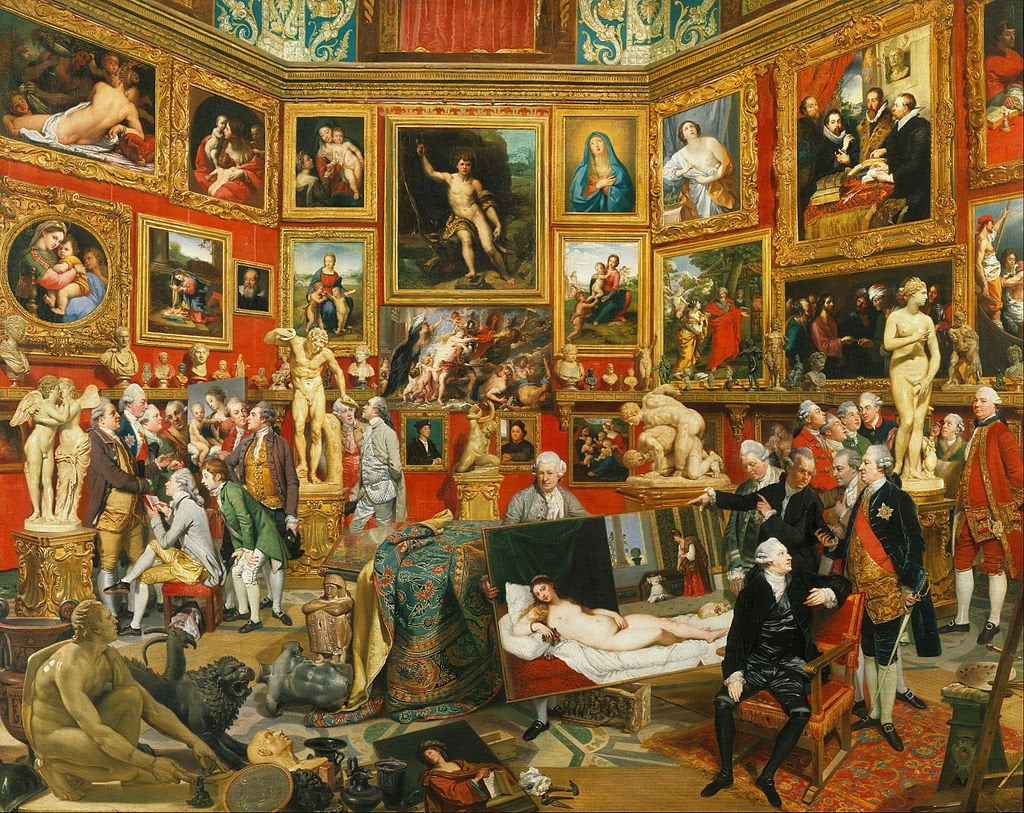
10. It has served as a model for various other works of art
Apart from being influenced by the Dresden Venus, the painting has also been influential. One of the most famous examples is a painting called “Olympia” (1863) by French Impressionist artist Édouard Manet.
In this painting, he depicted the naked Victorine Meurent, the woman who also stood model for perhaps his most famous painting called “Le Déjeuner sur l’herbe” (The Luncheon on the Grass).
Another example is the “Lying Venus” sculpture created between 1820 and 1830 by French Neoclassical sculptor Lorenzo Bartolini.
